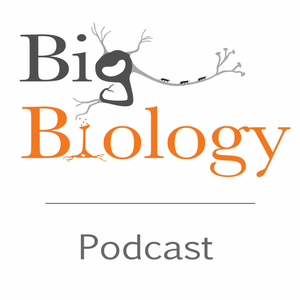
Big Biology
Art Woods, Cameron Ghalambor, and Marty Martin
1 Creator
1 Creator
bigbiology.substack.com
1 Listener
All episodes
Best episodes
Seasons
Top 10 Big Biology Episodes
Goodpods has curated a list of the 10 best Big Biology episodes, ranked by the number of listens and likes each episode have garnered from our listeners. If you are listening to Big Biology for the first time, there's no better place to start than with one of these standout episodes. If you are a fan of the show, vote for your favorite Big Biology episode by adding your comments to the episode page.
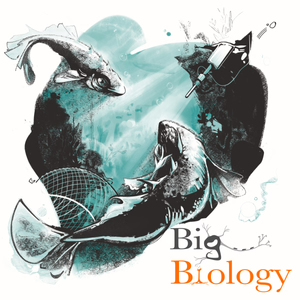
08/27/24 • 67 min
Can we predict evolutionary outcomes if we know starting conditions? Do the products of evolution in nature differ from those studied in well-controlled lab experiments?
On this episode, we talk to Katie Peichel, head of the Division of Evolutionary Ecology at the University of Bern, Switzerland, and Andrew Hendry, professor in the Department of Biology at McGill University, Canada. Katie and Andrew are part of a massive research team working on the evolution of threespine sticklebacks as they are reintroduced into lakes in Alaska. Sticklebacks have been a favorite species for evolutionary biologists since almost the origins of modern evolutionary theory. Traits like spine size and lateral plate armor evolve rapidly when populations colonize new habitats, leading populations to barely resemble one another. Unlike traditional evolutionary experiments, which try to infer what occurred in the past, the Alaska project is tracking in unparalleled detail changes in the phenotypes and genotypes of fish that went into each lake population.
We talk to Katie and Andrew about the origins of this incredible project, the pros and cons of different approaches to studying evolution, and the need for long-term experimental studies of evolution in the wild. This is the first of a series of episodes we will be doing on the Alaskan research project, so stay tuned!
Cover art: Keating Shahmehri
1 Listener

08/22/24 • 44 min
Can we study evolution in the wild? Are some species “super-evolvers”?
On the episode, we talk with Alison Derry, a professor of biology at the University of Quebec in Montreal, and Andrew Hendry, a professor in the Department of Biology at McGill University, Canada. This episode is the second we’ve done on the team’s work, and Andrew was also a guest on our first episode in the series. This conversation was recorded live in front of an audience at Kenai Peninsula College, in Soldotna, Alaska.
The college is just a few miles from the lakes where Alison, Andrew, and many of their colleagues and students carry out experiments on threespine sticklebacks. We ask Alison and Andrew about their research on the rapid evolution of these fish, which were recently reintroduced to the lakes, and how the introduction of two distinct stickleback ecotypes are affecting the evolution of zooplankton in the lakes. We also discuss the central position of sticklebacks in the food web and how the sticklebacks are impacting the ecosystems now as well as how they likely impacted the lakes in the evolutionary past.
Art by Keating Shahmehri. Audio from Hunter Morrison at KDLL. Find a transcript of this episode on our website.
This is a public episode. If you would like to discuss this with other subscribers or get access to bonus episodes, visit bigbiology.substack.com
1 Listener
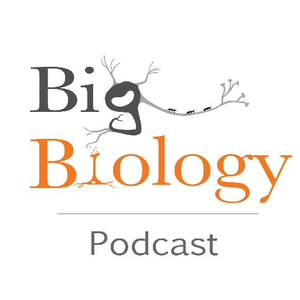
Coronavirus III: Town Hall (Ep 52)
Big Biology
11/19/20 • 32 min
How can local and state governments repair the damage done by COVID-19? Is there a vaccine on its way to a pharmacy near you? And what should you expect about lockdowns, facemasks, and new COVID-19 therapies in the coming months?
On this episode of Big Biology, a panel of experts discusses the virus’s trajectory and impact, and our options going forward. This conversation was recorded live at Busch Gardens in Tampa, Florida, in partnership with the University of South Florida College of Public Health and Morsani College of Medicine and the City of Tampa.
The panel consisted of Jane Castor, the mayor of Tampa, Kami Kim, a physician and professor who specializes in infectious diseases, Edwin Michael, an epidemiologist focused on the population ecology of disease transmission, and Michael Teng, an immunologist with expertise in vaccine development. We moderate as the experts look ahead, and discuss what we can expect long-term.
Photo: Allison Long
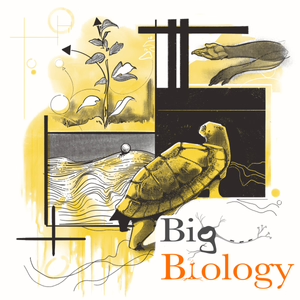
Devo-lutionary theory (Ep 127)
Big Biology
01/02/25 • 31 min
What role does development play in evolution? How can biology incorporate a broader, more complex definition of what it means to be an organism?
In this episode, we talk with Scott Gilbert and Tobias Uller, two of the authors who wrote Evolution Evolving: The Developmental Origins of Adaptation and Biodiversity. Tobias is a professor of Biodiversity and ...
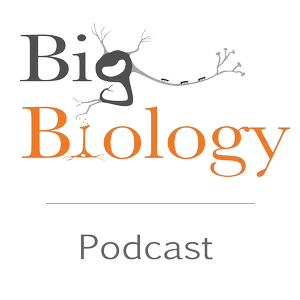
Post-match chat: A direct hit
Big Biology
02/26/25 • 6 min
In this post-match chat, Marty and Cam discuss our most recent episode “A direct hit”, with guest Holden Thorp. This is a quickly evolving situation, and on Friday last week, a federal judge continued to block the cut to the NIH indirect cost rate. And just a few days ago, Holden wrote another editorial Come together, right now. He writes about the continued onslaught of cuts, firings, and changes to the science system in the United States, and how members of the scientific community can respond.
This is a public episode. If you'd like to discuss this with other subscribers or get access to bonus episodes, visit bigbiology.substack.com/subscribe
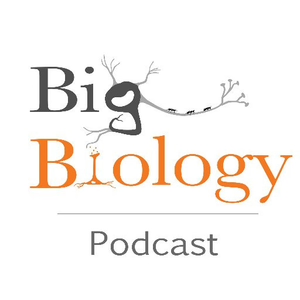
Ep 36: Intentional Evolution
Big Biology
02/27/20 • 45 min
Is there a role for agency in evolution? Do organismal efforts to maintain homeostasis represent a form of biological intentionality? On this episode of Big Biology, we talk with Scott Turner, a physiologist and emeritus professor of Biology from the SUNY College of Environmental Science and Forestry. Scott’s book, Purpose and Desire, discusses how holes in standard evolutionary theory might be productively filled by the concept of homeostasis. Scott argues that by attempting to maintain metabolism and exporting entropy to the environment, organisms manifest a form of agency that can affect the evolution of their lineages. His book and ideas have met with some criticism, and in the show, we confront him about whether his position is subtle intelligent design theory.
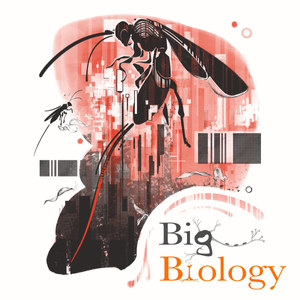
11/29/23 • 29 min
How do biologists categorize species? What’s the best and quickest way to describe millions of unknown species?
On this episode, we talk with Michael Sharkey, an entomologist and taxonomist who spent much of his career at the University of Kentucky, and is now the director of the Hymenoptera Institute. Since its inception, taxonomy has relied on careful morphological analysis of specimens to delineate species. In the past few decades, the COI “barcode” region of the mitochondrial genome has become a key additional piece of genetic evidence used to characterize species. In a much-discussed 2021 paper, Michael and colleagues used barcoding to identify over 400 new species of braconid wasps. The backlash from scientists who adhere to traditional taxonomic methods was swift, and at times harsh, with critics claiming that relying primarily on COI to define species is simply unacceptable. Sharkey, however, remains convinced that taxonomy should embrace molecular tools, especially because millions of species are yet to be discovered and rates of extinction are ramping up. We talk with Michael about how many insect species there are, how barcoding can make taxonomy accessible to more scientists, and what the future of taxonomy might look like.
Cover art: Keating Shahmehri. Find a transcript of this episode on our website.
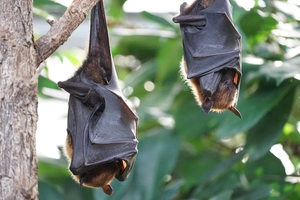
03/28/18 • 51 min
Tune into this podcast to hear Marty and Art talk to Barbara Han about how we track infectious diseases and whether we'll ever be able to predict outbreaks.
Get full access to Big Biology at bigbiology.substack.com/subscribe

12/17/20 • 29 min
What is a germ cell and why do animals separate germ and soma (body) cells at all? What molecules determine whether cells become germ or soma, and are some such mechanisms products of horizontal gene transfer?
On this episode of Big Biology, we talk with Cassandra Extavour, an evolutionary developmental biologist at Harvard who studies the how's and why's of germ cell differentiation in insects. Recently, Cassandra's lab has been working on oskar, a novel and highly conserved gene that is indispensable for giving insect cells the ability to become sperm or eggs. She and others have found that Oskar effectively acts like a magnet in developing insect cells, keeping together molecules critical to transformation of undifferentiated cells into functional germ cells. Bizarrely, this really important gene is thought to have evolved partly through horizontal gene transfer between insects and particular bacteria. Since then, oskar has also come to have many other functions, including for nerve cell development, even though much of its history was in species without nervous systems. Cassandra thinks that genes like these with complex histories and pleiotropic effects might be very common in living systems, much more than longstanding one gene-one phenotype thinking would lead us to expect.
Photo: Hannah Davis
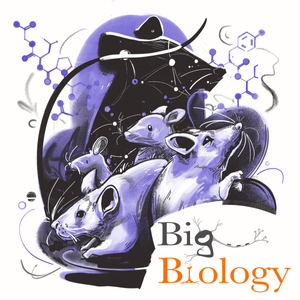
Spiny, but social (Ep 124)
Big Biology
10/24/24 • 34 min
What are spiny mice and why are they so social? What about their brains makes them gregarious? Might network neuroscience be a useful framework for understanding spiny mice behavior?
On this episode, we talk with Aubrey Kelly, an Assistant Professor in Psychology at Emory University. Aubrey is a behavioral neuroscientist working on many vertebrate specie...
Show more best episodes

Show more best episodes
Featured in these lists
FAQ
How many episodes does Big Biology have?
Big Biology currently has 175 episodes available.
What topics does Big Biology cover?
The podcast is about Podcasts, Education and Science.
What is the most popular episode on Big Biology?
The episode title 'Stickle-back to the future: experimental evolution in nature (Ep 121)' is the most popular.
What is the average episode length on Big Biology?
The average episode length on Big Biology is 31 minutes.
How often are episodes of Big Biology released?
Episodes of Big Biology are typically released every 14 days.
When was the first episode of Big Biology?
The first episode of Big Biology was released on Dec 6, 2017.
Show more FAQ

Show more FAQ
